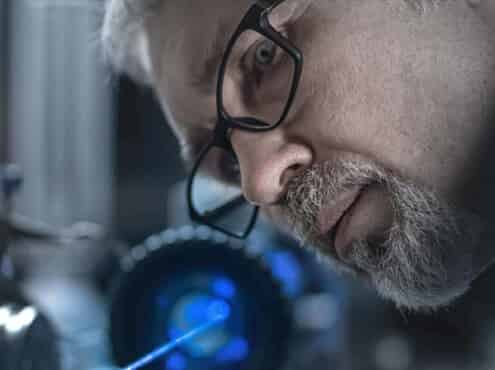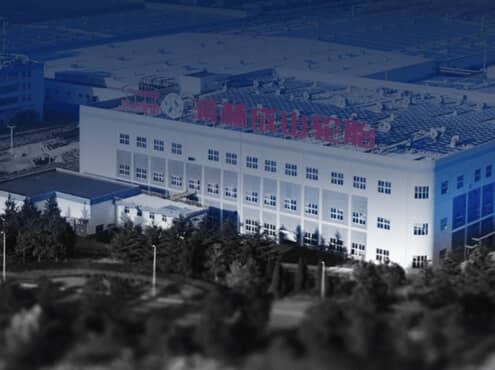


Drive with greater peace of mind, and maintain your car with care! In addition to paying attention to whether key components of the car such as the tires, engine, and brakes are in good and healthy working conditions, you should also carry out wheel alignment when necessary to ensure the safety and comfort of driving. So, what exactly are the functions of this maintenance project that focuses on the wheels? Do you need an alignment after replacing tires? What are the potential pitfalls during the actual operation? Let's talk about it in detail below.

What Is Wheel Alignment and Why Does It Matter?
Wheel alignment, also known as "four-wheel alignment", in simple terms, is to find the appropriate "positions" for the front and rear wheels of a car, so that the relative positions and angles among the car tires, the steering structure, and the front and rear axles are in an ideal state.
The reason why wheel alignment is important is mainly that inaccurate alignment may cause problems such as the vehicle veering off course, unstable driving trajectory, abnormal wear of tires and suspension components, tire blowouts, and increased fuel consumption. This not only increases the risk of driving safety but also affects the service life of tires, riding comfort, and fuel economy. If the wheel alignment can be correctly and standardly completed, the above problems can be effectively avoided.
Do New Tires Require an Alignment?
Do you need an alignment after replacing tires? The answer is yes! Many car owners think that it is enough to do a wheel dynamic balance when replacing the tires in order to save money and trouble. In fact, both dynamic balance and four-wheel alignment are indispensable. The former can optimize the mass distribution of the wheels, and the latter can ensure that the wheels are accurately "positioned". Both will affect the subsequent driving safety, comfort, and the service life of the vehicle.
Wheel alignment is a routine item for automobile maintenance and inspection. If you have difficulty in judging "do I need an alignment with new tires", you might as well pay attention to the following situations.
· The vehicle has a tire blowout problem: The huge impact force generated during a tire blowout will not only damage the tire but may also cause the vehicle's suspension system to deform due to the impact of the force, and then lead to changes in the original four-wheel alignment parameters. In this situation, not only should a new tire be installed, but also a wheel alignment should be carried out again.
· After replacing the suspension parts: When replacing components of the suspension system such as shock absorbers and control arms for the vehicle, the wear differences and manufacturing errors between the old and new components may disrupt the original wheel alignment, and timely adjustment and optimization are required.
· Increased mileage and variable road conditions: After replacing the new tires, as the vehicle mileage increases and the road conditions become more complex, problems such as tire wear and uneven force application are inevitable. Over time, these will lead to changes in the wheel alignment parameters.
In addition, when evaluating the question of "do I need an alignment after replacing tires", factors such as whether the vehicle has been involved in a collision accident, and the differences in size and specifications between the newly replaced tires and the original factory tires should also be taken into consideration.

Benefits of Combining Alignment with New Tires
In addition to focusing on "Do you need an alignment after replacing tires", when changing tires, attention should also be paid to the quality, performance of the tires themselves, and their compatibility with different vehicle models. For example, car owners driving small or compact vehicles are very suitable for replacing with the FSR-801 semi-steel small tires for passenger cars launched by FORTUNE Tires.
This high-quality car tire has multiple advantages. With its optimized pattern design, it strikes a balance between driving mileage and fuel efficiency, and is more environmentally friendly and energy-saving. It is not only friendly to the environment but also helps to reduce fuel consumption and improve economic efficiency. The wear-resistant tread compound and the optimized tread groove design make the tire more durable.
In addition, the optimized tread compound of the FSR-801 tire reduces energy loss and heat generation. Replace your tires with this one and have the wheel alignment done properly, and you will enjoy a more reassuring and comfortable driving experience.

According to the differences in vehicle models, you can also replace the tires with other types of FORTUNE Tires to meet the diverse needs of different car owners.
Common Myths About Alignment and New Tires
To carry out wheel alignment and tire replacement properly, it is necessary to get rid of the "misunderstandings" as soon as possible. For example, in terms of wheel alignment, many car enthusiasts believe that only the front wheels need to be aligned. In fact, both the front wheels and the rear wheels require re-alignment. When it comes to tire replacement, ignoring the tread patterns when buying tires and blindly pursuing a single performance will all affect the experience of using new tires.
How to Maintain Proper Alignment?
To carry out wheel alignment correctly and standardly, sufficient preparatory work should be done in advance, including a detailed inspection of the tire pressure, vehicle body height, wheel bearing clearance, steering tie rods, etc. When adjusting the alignment, the vehicle needs to be placed on a four-wheel alignment instrument to measure parameters such as the camber angle, caster angle, toe-in and toe-out of the tires, and make targeted adjustments. After the alignment is completed, a road test should also be carried out to check whether the adjustment results meet the standards.
Conclusion
Do you need an alignment after replacing tires?In most cases, the answer is yes. Especially when facing special situations such as maintenance of the suspension or steering system, replacement of tires with non-factory specifications, and repair after an accident, wheel alignment should be carried out in a standardized manner. If there are no obvious problems, considering the long-term driving safety and economy, it is advisable to make wheel alignment a routine inspection item after tire replacement, so as to prevent potential problems and seek long-term benefits.
FAQs
Do l need an alignment with new tires if my car drives straight?
In the short term, if there are no issues such as the vehicle drifting or uneven tire wear before the tire replacement, and the newly replaced tires have no quality or installation problems, wheel alignment can be postponed for the time being. However, from a long-term perspective, only by carrying out wheel alignment regularly and standardly can potential risks be effectively prevented and the driving experience be enhanced.
Can l skip alignment to save money?
It is recommended that you give up this idea! Save when you can and spend when it's necessary. Having your car's wheel alignment done is an investment in the safety and comfort of your future driving. Moreover, a proper wheel alignment can also help extend the service life of the tires. Blindly trying to save this money is just like "picking up the sesame seeds but losing the watermelons."
How long does an alignment take?
Wheel alignment doesn't need to be carried out frequently. If there are no obvious problems such as the vehicle drifting or the steering wheel being misaligned, it is sufficient to have it checked once every 1 to 2 years or approximately every 20,000 kilometers of driving.







